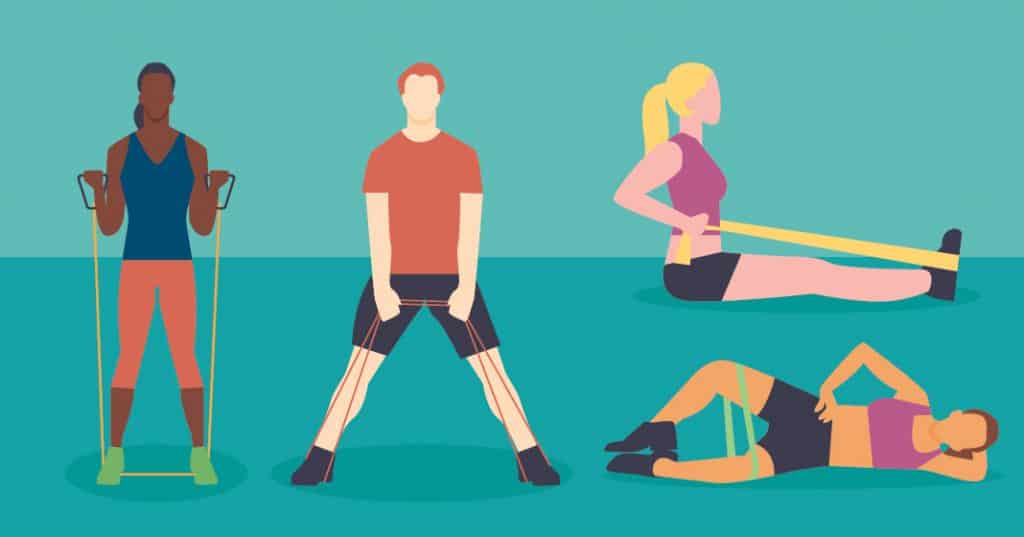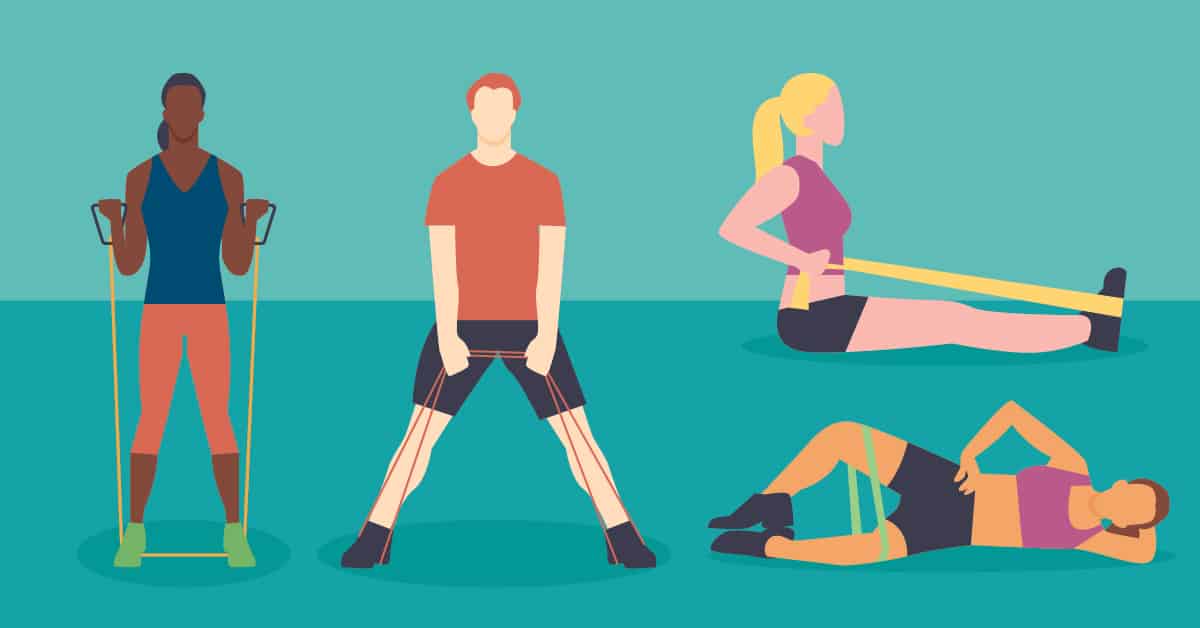
Need a new band to add to your workout playlist? Try exercise bands! An exercise or resistance band offers a versatile piece of exercise equipment that comes in an assortment of options.
You can use exercise bands alone to help improve strength and muscle tone. Plus, you can add them to your free-weight routine to provide additional stimuli for your muscles. The best part? You can stow bands in your gym bag, suitcase, or under your bed for easy access to a quick workout.
These strength-building accessories offer a variety of ways to bolster your exercise routine. But all the options out there may leave you scratching your head. That’s why we’ve put together this ultimate guide for resistance bands. Read on to learn about the benefits of workout bands, the available options, and which exercises work best with each type of band.
The Benefits of Resistance Bands
When it comes to perks, resistance bands have plenty. They’re inexpensive, and they provide as many benefits as free weights and the fancy weight machines at the gym. Here are some of the key benefits.
All fitness levels are welcome.
Bands introduce you to different movement patterns, and they’re low impact for your joints. They can help you rehabilitate injuries or warm up your body before weightlifting. Plus, bands can help advanced gym-goers take their workouts to the next level.
They help you work up a sweat.
Bands can add as much resistance to your workouts as free weights or machines. Depending on the type of band you use, you can change the tension by using thicker bands. The options are endless.
They help you increase stability and balance.
Resistance bands keep constant tension on a muscle when it’s contracted. Bands require more coordination and balance than free weights.
They save space.
Exercise bands fit in small spaces, which means they won’t take up much space. You can toss them in your gym bag or tuck them away in a suitcase when you travel.
Now that you understand the benefits of exercise bands, it’s time to figure out which ones are best for your workout routine.
4 Types of Exercise Bands and How to Use Them
Exercise bands vary in size, shape, color, and length. Each type of band benefits your workout differently and provides a different kind of resistance.
1. Tube bands with handles
A tube resistance band looks like a jump rope with a handle on each end. You can work your full body with tube bands, which makes them great for someone without a gym membership or with limited space. Workouts with these bands most resemble a dumbbell or gym machine workout.
Anchor a tube band to a post or door to fix it in place, then pull on both or one handle at a time. Or stand on the center of a band to hold it in place and pull one handle up with each hand.
Tube band resistance ranges from 10 to 50 pounds.
2. Power bands (also called loop bands)
Power bands are big rubber bands that come in the broadest variety of weight resistances. Use these bands in physical therapy, to add resistance during bodybuilding exercises, or to help improve athletic performance.
Loop a power band around your feet to assist in exercises such as pull-ups. Use power bands to add extra tension on the bar when you bench press or squat. Or anchor a power band to a post or rack, or hook it overhead to do resistance exercises.
Typically, power band resistance ranges from five to 175 pounds.

3. Therapy bands
Therapy bands are longer than tube or power bands and offer less resistance. They consist of a single piece of thin rubber that stretches up to seven feet. Though they don’t fully loop, you can tie them into a knot.
Use these bands in a therapeutic setting to help rebuild strength after an injury, surgery, or illness. They provide a low impact workout and help you regain coordination and balance. Or use therapy bands in Pilates and other types of workout classes that benefit from a small amount of extra resistance.
A set of therapy bands usually ranges from three to 10 pounds of resistance.
4. Mini bands
Mini bands are a smaller version of power bands, and they come in rubber or fabric. Use these bands for lateral lower body exercises. Loop them around the ankles or below the knees to create high glute tension. And glutes aren’t the only thing these bands work. Mini bands work great for shoulder-stability exercises and to help to improve your coordination while doing headstands.
You can find mini bands with light, medium, and heavy resistance levels ranging from five to 50 pounds.
Put It All Together
Exercise bands add resistance, balance, and variety to any workout routine. Add two to three resistance band exercises to your weekly workouts using one or more of the options listed above. Do two to three sets of eight to 12 repetitions for each exercise, and work your upper and lower body at least once per week.
